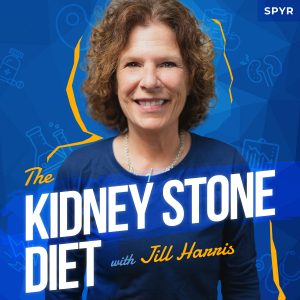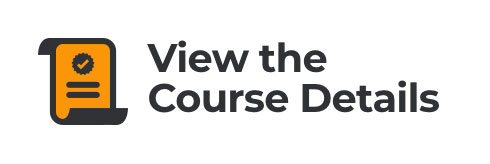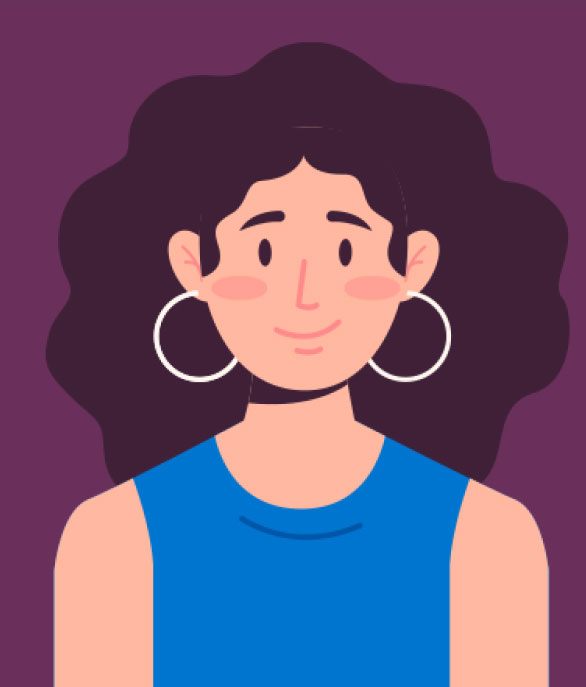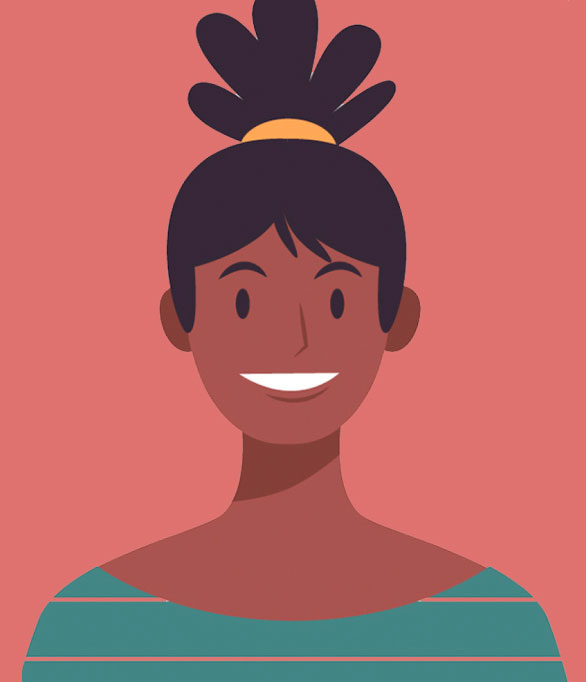This week Jill answers an FAQ about peanut butter on the Kidney Stone Diet.
Jeff Sarris: Welcome back to the Kidney Stone Diet podcast, the show about reducing your kidney stone risk and living your best life. I’m your host and fellow student, Jeff Sarris.
Jill Harris: And I’m Jill Harris, your kidney stone prevention nurse. Hello, Jeff.
Jeff Sarris: Hi there! We have you in a different spot today because the lighting was just a little funky in the window there.
Jill Harris: The lighting was terrible! Usually, it’s good. I mean, you know, you get the light right in front and that’s how you want it, but no. For whatever reason, it’s the way it’s hitting. And, to bring up light, not that anyone asked, but I’m so super happy that it’s lighter out longer. It just gives you what you feel. You know, in the winter, you’re like, it’s 4:30. It’s pitch black, you’re like, “Well, I guess my night’s done!” You know, in the summer–I know it’s only spring–but you get like four extra hours where you feel like you’re alive. It’s amazing!
Jeff Sarris: Yeah, it is so important. And, today, the sun sort of came out a little bit just a little while ago, which it just changes the day. I mean, they talk about like Seasonal Affective Disorder and things like that, where you wake up just emotionally down and not feeling well. But when that sun comes back, it’s huge. And having more time in the light, whether you’re able to get out in the sun or not, it has a huge impact.
Jill Harris: Yeah, best thing ever. And I don’t know, but anybody watching this, whoever will say, “Oh, get this SAD light. It’ll take your blues away!” I’ve never found a light that’s going to take my blues away in the deep dark of winter. So, if anybody has one of those great SAD lights, and you swear by it, put it in the comments, please, because I’m buying it. Lighting is very important.
Jeff Sarris: All the light therapy stuff I find very fascinating. I don’t know enough about it to even like really bring it up here at all, but there’s things with red light and this and that. I’m very curious to dive in, but I haven’t taken the time yet to do so.
Jill Harris: Well, you know, lighting has changed! People like, “Really? They’re talking about lighting, Henry!” Shut up! Listen! I got a light over here that, you know, now everything’s remote control, too, so I could change that light to blue, or green, or amber and it just it does! Lighting is super important, right?
Jeff Sarris: Definitely! It’s fun because the lights behind me, too, same thing! I have little lights shining down on the sound panels there. And, yeah, depending on what I’m up for, like usually at night, they’re kind of like purple because I just like purpley tones and things. But yeah, it just helps set the mood however you want it to be in a given time. But anyway, enough about lighting! We were going to do an FAQ-type episode today all about peanut butter: peanut butter, oxalate, and where it falls for kidney stone formers.
Jill Harris: Okay, peanut butter. Man, everyone always asks me about peanut butter. So here’s the deal. I’ll be on the Facebook page, and I’ll see somebody post–there’s like almost 13,000 members on that page, so it’s a very robust community and everybody’s always posting pictures of the food they’re making, or saying what they did, or talking about the obstacles they’re going through. I’m the Admin of the page. Jeff is there, too. And, you know, we’re always writing things on there and answering questions. So, peanut butter. Somebody may, say, post a picture of peanut butter, maybe they’re having peanut butter toast. And then there will be 52 comments: “No peanut butter! You can’t have peanut butter on a low oxalate diet! You can’t have it! What are you thinking? What are you, nuts?” You can have peanut butter. You can have peanut butter, people!
How Much Oxalate is in Peanut Butter?
Here’s the problem: I’m gonna show you what the problem is. I’m gonna show you what the problem is right now. Let me tell you–Jeff’s like, “Where the hell? I can’t keep her in place for nothing!” Here’s what people did. Here’s what people did. Here’s what people did. They got their jar of peanut butter, they got their spoon, why? Because peanut butter is high in protein! Why? Because they’re on the Keto diet and they can eat as much peanut butter as they want! Peanut butter, peanut butter, peanut butter! Along with not having any calcium. Peanut butter, you can have two tablespoons, two tablespoons, and that’s about 26 milligrams of oxalate. So, for each tablespoon, divide that by 2. Thirteen milligrams of oxalate.
We’re giving you 100 milligrams of oxalate a day. That’s what you get. Here’s your bank account. Here’s your bank account. Here’s your debit card, that’s for you. Now you’re grown, eat responsibly. And if you want peanut butter, have it every day if you want! A couple tablespoons, put it in your smoothie. That’s fine. Have it with a dairy or non-dairy calcium source. Even better! But there is no food that you should get a jar and a spoon, and stand up in your kitchen, and just eat because it’s high protein! I can’t tell you how many people came to visit me with their stones because that’s exactly what they did. Or the almonds all day long, or spinach all day long. We need to eat responsibly.
There’s no food you should be eating as much as you want, all the time. No food because your body wants a bunch of different nutrients and so it’s very important to mix it up. Mix it up, buttercup! Have all kinds of different foods in normal portion sizes. A jar of peanut butter because you’re on a high protein diet is not the best thing for you. Also, it’s so high in saturated fat. And, also, two tablespoons is 200 calories. Well, that’s a lot of calories, people. Most of us don’t have room for a whole jar of peanut butter. It’s hundreds and hundreds of calories. So, pay mind to that, too. But can you have peanut butter on a low oxalate diet? Darn tootin’! You better believe it! You certainly can!
What about Peanut Butter Alternatives?
So, again, it’s always going to be about portion, not perfection. You can absolutely have peanut butter on a low oxalate diet. Two tablespoons is 26 milligrams of oxalate. You still have, you know, whatever, 74 milligrams of oxalate to still play with. And getting your calcium needs met every day, that’s how we do this, people. Now, if you’re like, “I don’t care what she says. I ain’t eatin’ no peanut butter.” There’s sunbutter made from sunflower seeds, lower in oxalate. Somebody posted on the Facebook group today an oatmeal butter or an oat butter, something like that. It looked delicious! But, again, high in calories, you know, 180 calories for two tablespoons, which is fine. I’m just saying. Just because something’s healthy don’t mean it don’t have no calories, people, so you’ve got to pay attention to that. So, there’s other different alternative butters, too.
Pistachio nut butter people like. And pistachio nuts are safe to have on a lower oxalate diet, too. I think you can have like 50 nuts for, like, I don’t know, 20 milligrams of oxalate, something like that. Look at your Harvard list at kidneystonediet.com to see exactly, but it’s about there. So, there’s alternatives that you can have, but if you’re a purist, have your peanut butter! It’s not a problem. And, so you never think, “Boy, she’s kind of glib. I don’t think she understands what I’ve been through.” I do. I do, I’ve been listening to the harrowing stories for the last 23 years, so I know what you’ve been through. And so if it makes you, “Eh, I don’t know about this.”
Do This for Your Follow-Up Urine Collection
Here’s what I tell my patients: when you’re doing your follow-up urine collection, have your peanut butter. If that’s something you’re doing a lot, on the day you’re doing your urine collection–your follow-up urine collection–have the peanut butter, so you can see what your oxalate value is and so you so you don’t have the anxiety that often accompanies this whole diet or any diet because you don’t want to make a stone again. And you’ll see that if you’re meeting your calcium needs, and you’re eating like a grown-up and not the whole jarm your oxalate will be absolutely fine. I promise because I look at these follow-up urine collections daily, so I know.
And I’ll always tell people, vegans, especially. “Jill, I’m eating this, this, and this. I’m worried about the oxalate!” Do your urine collection when you eat those things and see. They’re always fine. So I have a lot of data to go by before I open my mouth and give you advice on how to do something. I see what I see, so I know that it’s safe. I wouldn’t misguide you.
Jeff Sarris: Yeah, and I think that’s also huge. Just how you said you can have these things that you otherwise think you can’t have. Because, a lot of times you say, other than spinach and almonds, almost everything is still on the table. It’s just the the portion, the quantity that you’re having.
Jill Harris: Yes, and people will say, “Well, what about buckwheat groats, Jill? Why don’t you just say–you just say spinach and almonds!” Well, that’s mostly what people–not everyone’s eaten buckwheat groats, whatever the hell they are. And wheat berries, very high in oxalate. But I say that as what the average person coming to me–not many people out of the thousands I deal with are saying, “Boy, girl, let me tell you how many wheatberries I’ve been eatin’.” I’m not saying it never happens, but, for the most part, if they’re paying attention to that, they’re going to be mostly okay. Yes, there are other higher oxalate foods, like buckwheat groats and wheat berries, and, you know, there’s some you’ve got to pay attention to, but mostly anything you eat–I mean, spinach is 600 milligrams per cup.
So, anything you want to eat, typically, except those two things–and yes, be careful of buckwheat groats and wheat berries because I’ll get comments about that–it’s always going to be have that! You could have sweet potatoes once in a while just don’t need a whole one! Get your calcium needs met. It’s a portion problem. We tend to find foods that either work for us, or we love, or we’re limited because of other medical conditions, and then we eat as much as we want of those 10 foods. I’m here to ask you to please vary your diet. Try new foods once in a while, eat things within portion size. You know, I’m making it sound easy. I know that that’s difficult, but that’s where you need to start wrapping your brain around these notions.
Portion: eat responsibly. We’re not 12 no more. We’re not 12 year old boys eatin’ whatever we want. Going to the movies and eating Jolly Ranchers, and Jujubes, and popcorn as much as we want. We’re grown. We need to nourish our body in the best way possible so it works for us. Does that mean you can have no Jujube or a scotch sometimes? Of course not! I’m asking you to look at what you do, day-to-day, week-to-week, month-to-month? Are there some things that you need to bring it on back home? Are there ways in which you should expand your nutrition? A food group? Do you really not want to eat bread for the rest of your life, or do you want to learn how to eat responsibly? Or you’re like me–Jeff was saying a little while ago, he was saying, “Girl!” –my words of course, not his–”Girl, have you tried plantain chips?” And I said, “Oh, honey, they cannot be in my house because they’re–” he said they’re super crunchy. I said “Exactly why they can’t be in my house!” There’s no way. I’d be an addict with them. So also, know your triggers. Jeff can limit himself on that–
Jeff Sarris: I didn’t say that!
Jill Harris: So, yeah, that’s such a slippery slope. And we all have those trigger foods where they just don’t come in my house. I’ll have people say, “Jill, I’m eating so much sugar lately. And I’ll say, “Grace, what the hell is that doing in your house?” “Well, I’ve been baking.” Well, that’s a problem! That’s a problem. I’m not having crackers and chips in my house for the most part because I’m an addict. I’m not above any of this. And the reasons I know what to tell y’all is because I have screwed up many times in my life. And that’s how we learn and then we teach from there. We don’t teach because we’re perfect and we’ve done it all right. We’re like, “Oh, screwed that up. Let me make sure other people don’t do that!” That’s how we become good educators by falling down and picking ourselves up. That’s life. That’s just life, right?
Jeff Sarris: Yeah, and just sort of along the lines of what you were saying about changing it up, I just want to remind everyone that on the website, there are a ton of free recipes–kidneystonediet.com–that Jill has, I mean, you’ve made some amazing recipes over this time and you’ve talked about it before, but before this, you didn’t really cook much. But, really, the stuff you’ve come up with is really phenomenal. And there are so many free recipes on there. You just go to the website, and I think it’s kidneystonediet.com/recipes.
But then, also, if you wanted to dive deeper and sort of see what can I eat throughout a week, a month, whatever it is, whatever sort of scale you’re looking at? What’s the sort of vibe of the meals that I could follow to stay within the Kidney Stone Diet recommendations and guidelines? But, also, to see that you can throw in peanut butter, you can throw in all these other things. There are the meal plans, so Kidney Stone Diet meal plans that every Sunday, you get an email to notify you that your meal plans been updated on the site. Then you go over the website, you can see four meals a day, breakfast, lunch, dinner, and snack, seven days a week, and you can sort of see what does it look like to follow the Kidney Stone Diet. That’s a premium service, but there are also all the free recipes on the site if you just want to go over there–
Jill Harris: You know, Jeff, too, it’s a premium service, but it’s $19 a month. It’s ridiculously cheap as we like to keep all of our prices cheap because as a patient myself, I know what it’s like also to get medical bills coming to my house. So, we keep these things very cheap. The best thing about the meal plan is it gives you inspiration. It allows you to say, “Hey, she’s making stuff with sweet potatoes. Can you believe it, Henry? I didn’t know we could have them!” You can! And it comes with education with each recipe. I write out a lot of stuff, a lot of free education, and would you care about, it’s simple. They’re damn good–because this is food I eat. But the best thing for you because I know how overwhelming it is for new patients is I have calculated the oxalate. I’ve calculated the added sugar and the salt so you understand that this meal inspiration is safe for you to eat as a kidney stone former.
And, by the way, if you’re diabetic, too, it will fit everybody. Hypertension, because it’s low salt, so it’s a very valuable service and the reason I think–I’m not a good sales person, but I love my products so much and I have seen what they do for people. People are so successful with them, I feel proud of them, and I feel proud that we keep the prices so low. It’s very important to all of us who work here at Kidney Stone Diet, so that’s why I can talk about it because I’m proud. I’m proud of it and I and I like helping people and those services help people. Guaranteed! I’ve never in 23 years said, “Boy, that service sucks!” Never once, never once!
Jeff Sarris: Oh, yeah and to just touch on the course real quick while you’re there: the Prevention Course is a whole collection of videos that dives deep into everything that we talk about here, but also all collected in one spot, so you know the exact guidelines and things as you’ll find on the site, too. But then the group calls, the actual community side of things where you have access directly to Jill, and you’re working in a group setting with other patients and talking through the things that they maybe are dealing with that maybe you also are dealing with as well. And maybe just listening to someone else. discuss that and just sort of work through it can can be huge to help along your journey.
Jill Harris: Yeah, the people in the group calls, the accountability calls, you know, there’s people who lost 90 pounds. They stay in those calls for accountability and they lose 90 pounds, 30 pounds, they’re there. You know, it’s easy to pay attention to lifestyle when everything goes as planned, but that happens maybe once a week? Maybe an afternoon a week? I mean, otherwise, everything’s always been thrown at us. It’s when things don’t go our way, how do we stay compliant to our lifestyle? And that’s difficult, so that’s what the group calls are for. We laugh, we cry. We’re friends. It’s a community. Again, I like building community because we all need to feel like we’re not alone.
Everybody needs support. Everybody needs help with lifestyle changes. I wish every disease state had a program like this and I hope that someday it does. It’s very important to get on a call–it’s like a Zoom meeting–and you hear what other people go through so you know you’re not alone, and you have a safe place to put all your concerns, ask your questions, get better doctor office visits by what you learn there. It’s an awesome service, the Kidney Stone Prevention Course. It’s self-guided. Learn at your own pace. You have access, we give it to you for the rest of your life, you’ll always have access, but the group calls are my favorite part of it because we all get together and we talk about everything. It’s awesome, you know?
Jeff Sarris: Yeah, for sure. And there are other resources as well on the website, not to dive into everything, but you mentioned better doctor visits. There is an actual guide right there for free in a one-page sheet that breaks down the things you want to ask about urine collection and urine analysis and different things like that to make sure you get the best out of your doctor’s visit for the limited time you’re able to go there. Not to get too much in the advertising side of things, but I just wanted to mention it because it does connect with the the idea that peanut butter doesn’t have to just be completely vanquished from your diet if that’s something that you love and something that really brings joy or value into into your life. I think it’s just important to mention these things.
Jill Harris: I think mostly what we do here is we’re bringing foods back on your plate. People come to us and think they can never have so many foods again. My job is to bring foods back on your plate, but to teach you how to eat reasonably, like an adult, so that you don’t form new stones. So I’ll always say, “Look, I’ll give you peanut butter back, but you’ve got to put that spoon in the drawer. Get a knife and put it on a piece of bread and walk away!”
Jeff Sarris: I was hoping you were gonna say fingers!
Jill Harris: Yeah, no, really. So, you know, it’s about–you can eat most things, people. We’re not in the business of taking things away. As a matter of fact, our business is bringing things back so you can safely eat your food and know that you’re not going to make a kidney stone, but you got to learn how to do that.
Jeff Sarris: Absolutely. I think this is a great spot to wrap! If you have a question that you would like answered on a future episode of the show, the number again is 773-789-8763. And we will feature you on a future episode. We love hearing from everyone. We like throwing in these FAQ questions now and again, just because everyone has their own question particular to them. But things like peanut butter come up so often, just broadly speaking, that we want to be sure that we touch on that for the podcast audience, the YouTube audience, the people who maybe aren’t already in the Facebook group, aren’t already on the email newsletter, and the things where that’s already been discussed. But I think that’s a good spot to wrap. What do you think?
Jill Harris: Awesome, yep, I’m ready! That’s it!
Jeff Sarris: Sweet. Well, thanks again everyone for listening and we will see you next week.
Jill Harris: Thanks for joining us, everybody. Have a good day!














Leave a Reply